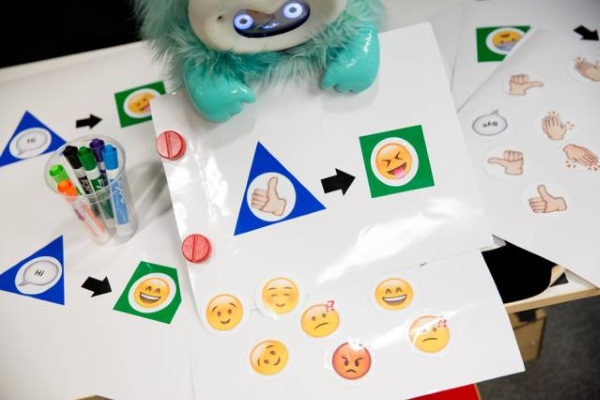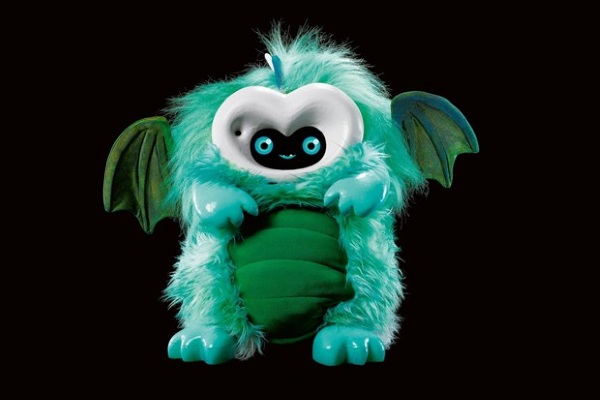Preschoolers are learning how to program interactive robots by applying stickers to laminated sheets of paper.

The project was developed by researchers at MIT’s Media Laboratory for the purpose of introducing young children to basic programming principles. It’s also meant to serve as a research tool to help determine which computational concepts children can grasp at what ages, and how tools like interactive robots can best be integrated into a classroom’s curriculum.
“We did not want to put this in the digital world but rather in the tangible world,” says Michal Gordon, a postdoc in media arts and sciences and lead author on the new paper. “It's a sandbox for exploring computational concepts, but it's a sandbox that comes to the children's world.”
In the group’s study, the MIT researchers detailed their use of Dragonbot, an interactive robot, which was specially developed by the Personal Robots Group at the Media Lab. The bot is equipped with audio and visual sensors, a speech synthesizer, and a video screen for a face that can display various expressions; Dragonbot can also perform a range of expressive gestures with its arms.

“It's programming in the context of relational interactions with the robot,” says Edith Ackermann, a developmental psychologist and visiting professor in the Personal Robots Group, who along with Gordon is a co-author on the new paper. “This is what children do — they're learning about social relations. So taking this expression of computational principles to the social world is very appropriate.”
The foundational components of the programming system are circular and triangular stickers, representing responses and stimuli, and arrow stickers, which represent the relationship between the former two. Children create computational “templates” by sticking the triangle, circles, and arrows on laminated paper. They then fill in the details with other stickers that represent stimuli, like a thumbs up or down, and responses, like a narrowing or widening of the eyes. There are also blank stickers which older children can use to write their own verbal cues and responses.
The system is specially designed to modernize not only how we think about programming, but how it gets taught, too.
“The systems we're programming today are not sequential, as they were 20 or 30 years back,” Gordon says. “A system has many inputs coming in, complex state, and many outputs.”
She goes on to explain, in layman’s terms, the fundamentals of how the Dragonbot system works: “The idea is to describe your code in little scenarios, and the engine in the back connects them.”
Gordon then concludes: “It's actually how we think about how programs are written before we try to integrate it into a whole programming artifact,” she says. “So I was thinking, 'Why not try it earlier?'”
To ensure a reliable reading of the children’s creation, one of the researchers manually enters the stimulus-and-response sequences using a tablet computer with a touch-screen interface that features icons representing all the available stickers.
When introducing a new child to the system, the researchers ask him / her to issue an individual command by attaching a single response sticker to the laminate sheet. When presented with the sheet, Dragonbot then executes the command.
When it’s presented with a program though, the bot will nod its head and say “I’ve got it,” at which point it will execute the chain of responses.
In the study, the researchers noted that even the youngest of the subjects were able to tell the difference between giving the bot a single command and giving it a program to execute. Furthermore, in interviews after their sessions, the children explained that they understood that programs, unlike commands, were responsible for modifying the internal state of the robot.
Moving forward, the team at Personal Robotics Group will work to develop a computer vision system for Dragonbot that will allow it to read the child’s sticker program simply by having the individual hold the piece of paper up in front of it (this, as opposed to the aforementioned method of having a researcher manually type the program in).
In terms of the learning process, the MIT Media Lab is planning further studies into the children’s use of this system to determine the extent of their understanding behind what, exactly, it is that they’re doing.
Via MIT
Advertisement
Learn more about Electronic Products Magazine





